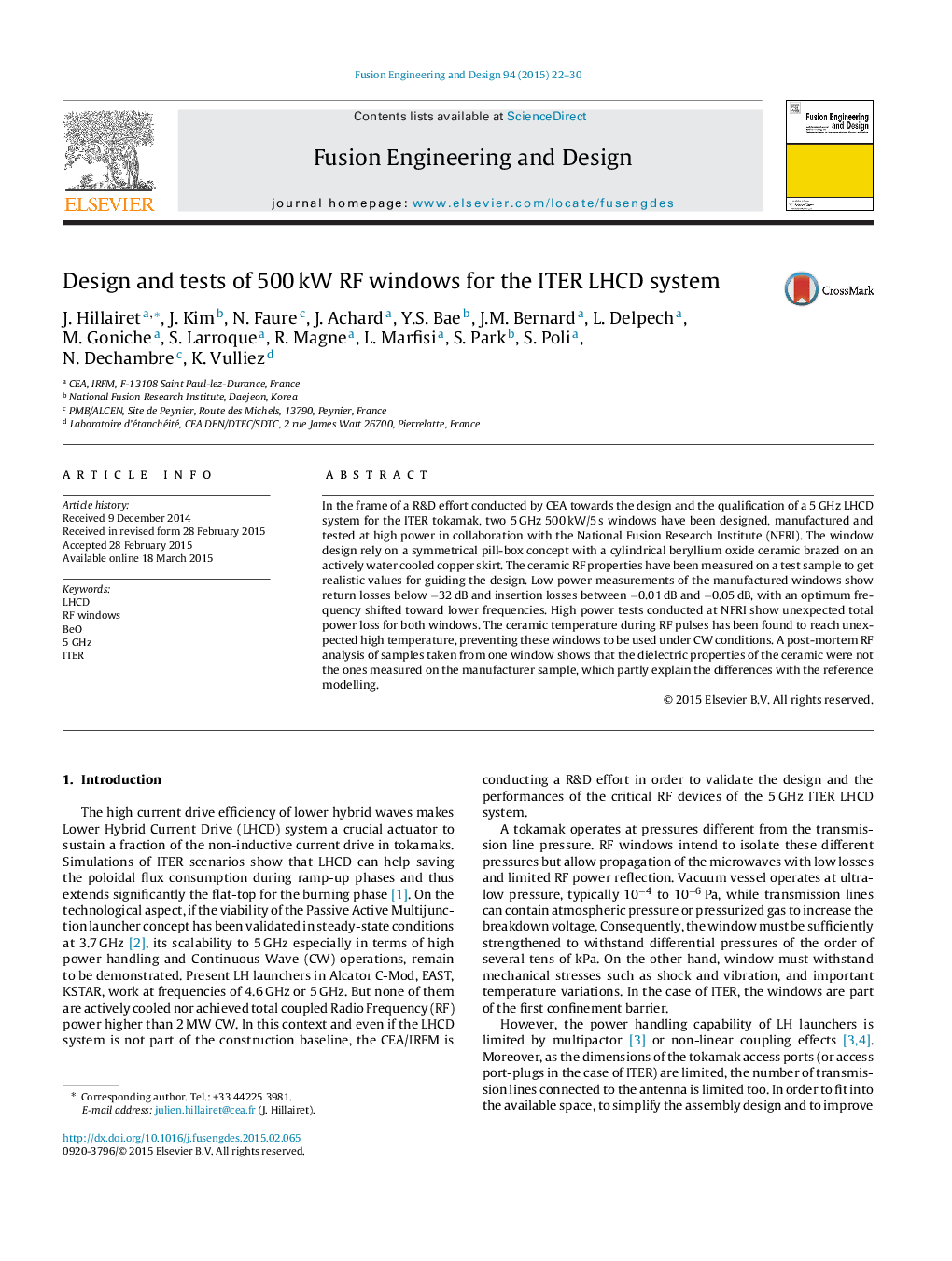| Article ID | Journal | Published Year | Pages | File Type |
|---|---|---|---|---|
| 271030 | Fusion Engineering and Design | 2015 | 9 Pages |
In the frame of a R&D effort conducted by CEA towards the design and the qualification of a 5 GHz LHCD system for the ITER tokamak, two 5 GHz 500 kW/5 s windows have been designed, manufactured and tested at high power in collaboration with the National Fusion Research Institute (NFRI). The window design rely on a symmetrical pill-box concept with a cylindrical beryllium oxide ceramic brazed on an actively water cooled copper skirt. The ceramic RF properties have been measured on a test sample to get realistic values for guiding the design. Low power measurements of the manufactured windows show return losses below −32 dB and insertion losses between −0.01 dB and −0.05 dB, with an optimum frequency shifted toward lower frequencies. High power tests conducted at NFRI show unexpected total power loss for both windows. The ceramic temperature during RF pulses has been found to reach unexpected high temperature, preventing these windows to be used under CW conditions. A post-mortem RF analysis of samples taken from one window shows that the dielectric properties of the ceramic were not the ones measured on the manufacturer sample, which partly explain the differences with the reference modelling.
